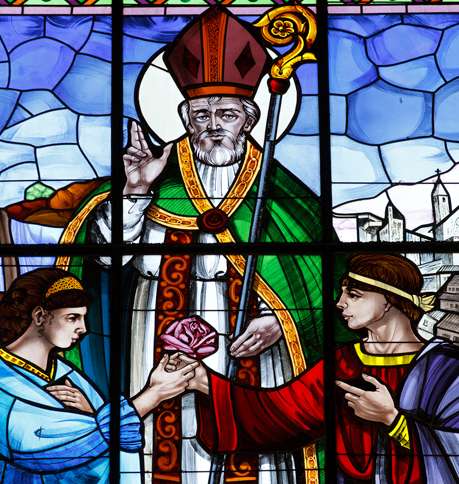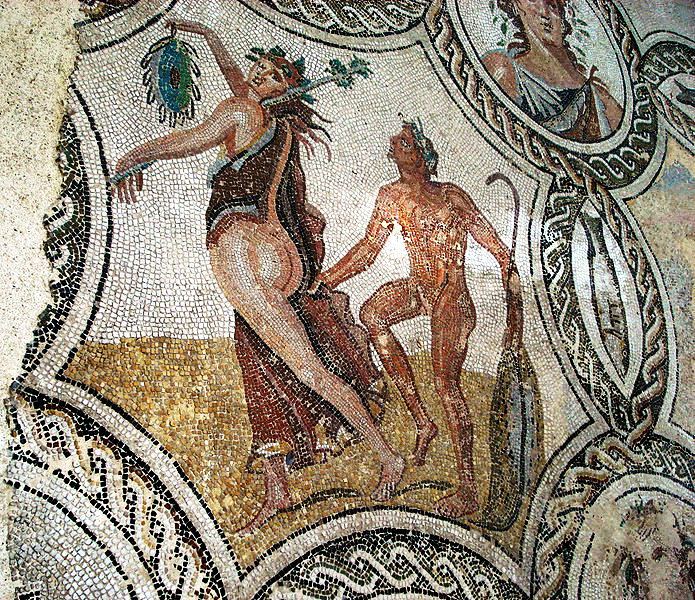SHS001- Valentine's Day
Welcome to the weird and wonderful history of Valentine's Day. Get ready for romance, martyrs, and key parties. Never forget about the key parties.

Episode #001 – Valentine’s Day
Intro
Allie: Welcome to the Sex History Show, a meandering walk across the landscape of human history. This is history in a whole new light, though. Behind every tree and under every rock, we’ll find the sex that really drives history.
Allie: This is a frank though polite discussion, so if you are offended by this, please stop listening now.
Allie: I’m Allie and these are my co-hosts.
John: Hi, I’m John.
Randal: And I’m Randal.
John: OK, let’s look behind a few bushes!
Body
Allie: I can’t imagine a better topic to start out our show than the history of Valentine’s Day!
Randal: That’s a tough one. From what I heard, it’s not even clear who the Saint Valentine was.
John: Well, the Catholic church lists a lot of Martyrs by the name of Valentine, but there are two for February 14th by that name: Valentine, the Bishop of Terni and Valentine, a priest from Rome [1], [2], [3].
Allie: Well, that’s true, though many scholars think that these are the same man ]4].
 John: But that’s pretty hard to say for sure, since both canonizations are made before the Catholics got serious about investigating their saints. Like many saints from this time, these two were merely declared to be saints by local bishops – bishops who didn’t leave many records [5].
John: But that’s pretty hard to say for sure, since both canonizations are made before the Catholics got serious about investigating their saints. Like many saints from this time, these two were merely declared to be saints by local bishops – bishops who didn’t leave many records [5].
Randal: So what was so romantic about these two?
Allie: Nothing, according to any ancient records! There are medieval tales, though. In the first legend, Emperor Claudius II banned marriage so men wouldn’t be bound to families and would therefore become soldiers. Claudius killed Valentine for performing illegal marriages. In another legend, Valentine fell in love with a girl that visited him while he was imprisoned – perhaps the jailor’s daughter. Before his execution, he slipped the girl a note signed “From your Valentine.”
Randal: That certainly sound apocryphal, but it’s a good story.
John: There is also is Valentinius of Alexandria (c. 100 - c. 153) [6]. He was an influential Gnostic teacher. Unlike the ascetic doctrine that has made it to modern Christianity, Valentinius taught that the marriage bed was central to Christian love.
Randal: OK, these guys may be the modern face of Valentine’s day, but it seems pretty clear that the early church deliberately pushed their own Saints in order to steal the limelight from non-Christian celebrations. The one I know best is Lupercalia, celebrated on February 15th in Rome from the 3rd century BC until some pope[7] banned it in the 5th century.
 Allie: That was a really fun celebration! Young men would run through the city naked, hitting people they met with some pieces of blood-soaked goat’s hide![8]
Allie: That was a really fun celebration! Young men would run through the city naked, hitting people they met with some pieces of blood-soaked goat’s hide![8]
Randal: And a lot of women would deliberately get in their way, believing that they would get pregnant or deliver babies more easily!
Allie: And the day before Lupercalia celebrated Juno, the Roman goddess of women and marriage. One custom had young girls putting their names in a jar. The boys would draw out a name, and the two would be partners for the duration of Lupercalia [9].
John: The first key parties!
Allie: The Catholic church eventually declared these “romance lotteries” immoral. With the saint’s days replacing Lupercalia [10], the sexual aspect of February 14th disappeared until the middle ages [11].
John: Yeah, but those medieval folks managed to switch back to February 14th in 1400, with one of the most romantic moments in Valentine’s Day history: the establishment of the High Court of Love.
Randal: Oh, Courtly Love. The medieval idea that it was really cool to pine after someone when you had no hope of success!
Allie: Well, there’s more to it than that. We should do a whole show about it sometime.
John: That would be cool, but I really want to know how those cards got worked into this.
Allie: Well, the oldest one is from Charles, Duke of Orleans to his wife in 1415. It’s still intact in the British Museum [12].
 Randal: I read that the modern mother of Valentine’s Day Cards is the American Esther Howland [13], who started producing and selling them, complete with the silly pointed heart, starting in the middle of the 19th century.
Randal: I read that the modern mother of Valentine’s Day Cards is the American Esther Howland [13], who started producing and selling them, complete with the silly pointed heart, starting in the middle of the 19th century.
Next Show
John: That’s another good question. Where did that ‘heart’ symbol come from? It doesn’t look anything like a real heart.
Randal: That’s one that I can answer. But, I’ve got to warn you: it involves a lot of crocodile dung.
John: What?!?
Allie: Well, until next time, we hope you’ll all visit us at www.SexHistoryShow.com. Check out our show notes and extended discussion in our forums!
Additional General Reference
Notes
[1] See the Patron Saints Index at catholic-forum
[2] There is apparently a third St. Valentine from Africa martyred on Feb 14th, but he didn’t get a Saint’s day. (wikipedia)
[3] Terni is north of Rome, about 100 kms travel by modern roads according to Google Earth
[4] The Jesuits called the Bollandists have concluded that the two mentioned here were actually the same person (Oxford Dictionary of Saints, s.v. "Valentine": "The Acts of both are unreliable, and the Bollandists assert that these two Valentines were in fact one and the same.")
[5] “Pre-Congregation” beatification was done by local priests and bishops without central approval. Starting in 1588, the Sacred Congregation for Rites and its successor The Congregation for the Causes of Saints made canonization a more complicated affir, replete with expanded documentation of the lives of the potential saints.
[6] 100-153 AD, Valentius was a candidate for Bishop of Rome. More here
[8] Plutarch describes this festival here
[10] And some other pagan sexual holidays. In Norwegian lore, Vali, god of archery and patron of all lovers, was celebrated in January and February. The church used St. Valentine’s day to help suppress Vali’s worship. See H. A. Guerber, The Norsemen, 1985, p. 165 and here
[11] Chaucer was actually the first to mention Valentine’s Day in a romantic context in Parliament of Birds, which can be read in modern form here as a modern prose translation. However, he spoke of May 2nd, the day of yet another St. Valentine! See catholic forum for a list of all the Valentines and many others besides.
[12] See the excellent History Channel’s Valentine’s Day special and notes here
[13] For more about Ester Howland, see American Antiquarian

